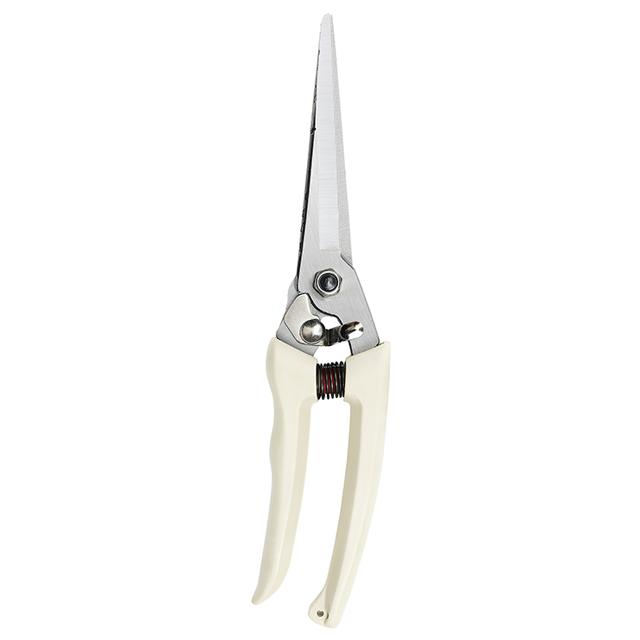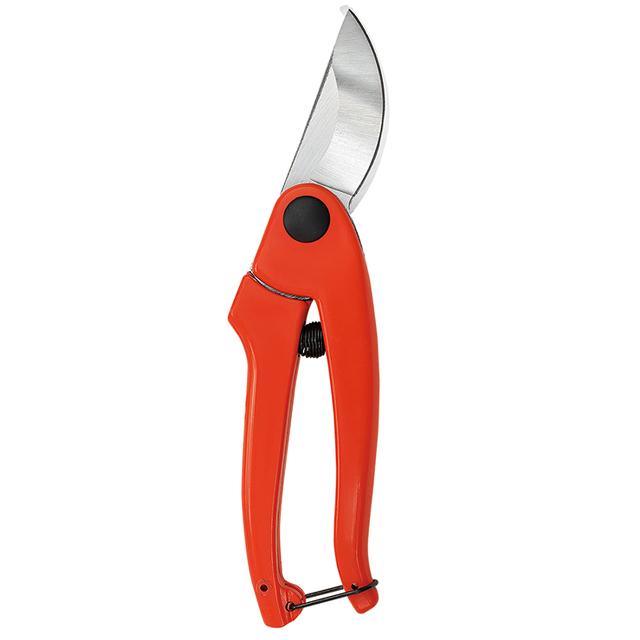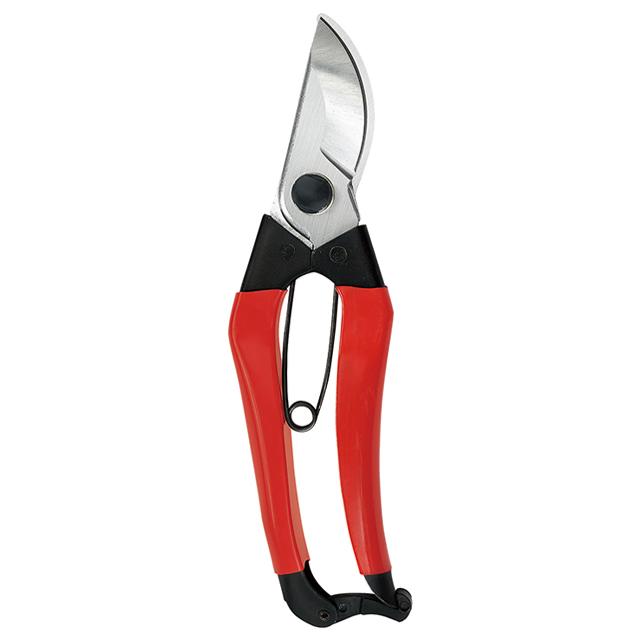The pruning shears for pruning branches should be smooth and inclined at a 45 degree angle with the
The pruning shears for pruning branches should be smooth and inclined at a 45 degree angle with the sprouts. Fruit tree pruning shears
1. The cutting mouth of the pruning branches should be smooth, and the inclined plane at a 45 degree angle to the cutting mouth bud, fruit tree pruning shears, cut down from the opposite side of the cutting mouth, the upper part of the inclined plane is level with the cutting mouth bud tip, and the lowest part of the inclined surface is the bud The base is flat, so the cut surface is small, easy to heal, and the bud grows quickly after germination. Cut the sparse branches at the branch point, level with the stem, leaving no residual piles. The sparse branches of bushes are level with the ground.
The direction and quality of cutting buds determine the growth direction of new shoots and the growth direction of branches. The direction of cutting sprouts should be considered from the distribution of branches in the crown and the strength of the expected growth of new branches. When the crown needs to be expanded outwards, the cutting sprouts should stay on the outside of the branches. Inward, for the overgrown branches, in order to suppress the growth of the branches, use weak buds as cut buds, and choose full and strong buds when supporting weak branches.
2. The pruning period of deciduous trees and evergreen trees should be different. Deciduous trees stop growing in winter, and then pruning loses less nutrients and wounds heal faster. Although evergreen trees are dormant in winter, there is a danger of freezing damage if the branches and leaves are cut off. Since the roots, branches and leaves of evergreen trees are active throughout the year, the metabolism is not stopped, so the nutrients in the leaves are not completely used for storage. When the branches and leaves are cut, the nutrients are lost, which affects the growth of the trees. The pruning period of evergreen trees is generally in late spring after winter.
3. When pruning larger branches and trunks, a step-by-step operation method can be used. First cut 20 cm above the required saw cut from the bottom of the branch up to the depth of half the thickness of the branch. Saw the branch from above, leaving a residual pile, and then saw the residue from the saw cut Pile, can avoid the branches and stem walls from cracking.
4. When sawing off the larger branches and trunks, the wound surface is larger, which often rot due to rain or the invasion of germs. Therefore, when sawing the branches and trunks of trees, the saw cut must be flat, disinfected with 20% copper sulfate solution, and finally coated with a protective agent (protective wax, blending paint, etc.). Plays the role of antiseptic, anti-drying and promoting healing.
5. Tools should be kept sharp during pruning, and the climbing machinery and stepladder should be checked for flexibility and looseness before use to prevent accidents. Fasten the safety rope when climbing the tree. When working near high-voltage lines, pay special attention to safety and avoid electric shock. If necessary, please cooperate with the power supply department. When pruning the sidewalk trees, special personnel are assigned to maintain the site to prevent the large branches from being sawn and hurting the pedestrians and vehicles.




